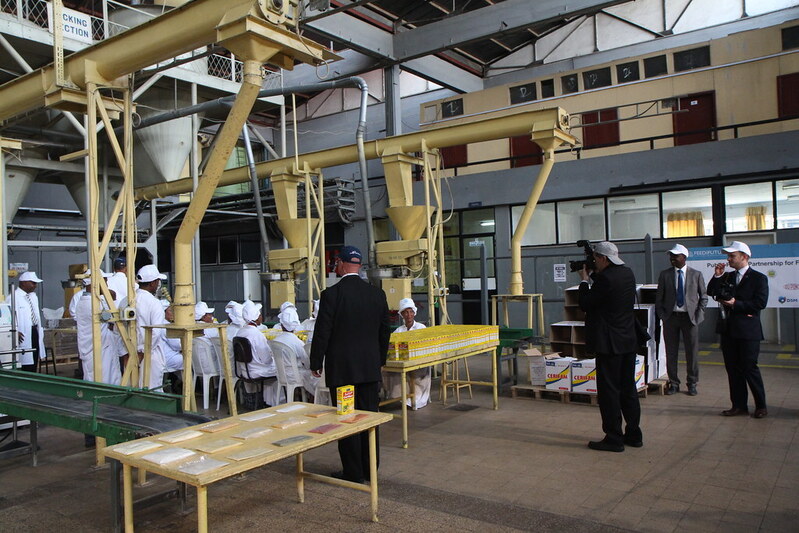
Introduction
In a world where many people still face micronutrient deficiencies—even in high‐calorie environments—food fortification has emerged as an effective public health strategy. By adding essential vitamins and minerals to everyday foods, fortification not only helps to combat “hidden hunger” but also supports overall health, cognitive development, and productivity. In this blog post, we’ll explore what food fortification is, how it works, its benefits and challenges, and why it’s a crucial intervention for populations around the globe.
What Is Food Fortification?
Food fortification is the deliberate addition of one or more essential micronutrients (such as vitamins and minerals) to a food, whether or not these nutrients were originally present. This differs from enrichment—which focuses on replacing nutrients lost during processing—with fortification sometimes introducing nutrients that are not naturally present at all. Common examples include adding iodine to salt, folic acid and iron to wheat flour, and vitamin D to milk. 🔗

A Brief History
Fortification isn’t new. During the early-to-mid 20th century—especially around the World Wars—governments began fortifying staple foods to prevent nutritional deficiencies in the population. Over time, policies evolved into both mandatory and voluntary programs. For instance, in many countries, salt iodization has become a standard practice to prevent iodine deficiency disorders, while folic acid fortification in flour has been credited with reducing neural tube defects in newborns. 🔗

Why Fortify?
Addressing Micronutrient Deficiencies
Even in regions where people consume enough calories, diets can be lacking in vital micronutrients. Deficiencies in iron, vitamin A, folic acid, zinc, and other micronutrients can lead to serious health issues such as anemia, impaired cognitive development, and increased risk of infections.
Public Health Impact
Food fortification has proven to be one of the most cost-effective interventions in public health. For example, the mandatory addition of folic acid to flour in the USA has led to a significant reduction in neural tube defects—preventing thousands of cases each year—and has saved billions in healthcare costs. 🔗
Ease of Implementation
One of the biggest advantages is that fortification does not require consumers to change their eating habits. It integrates seamlessly into the existing food supply, making it an attractive intervention for governments and industries alike.
How Is Food Fortification Done?
Fortification involves carefully measured amounts of micronutrients added during food processing. Food manufacturers use premix powders—comprising vitamins and minerals in chemical forms that are stable under processing conditions—to achieve a uniform distribution in the final product. Automated dosing and blending equipment ensure consistency and compliance with national regulations. 🔗

Types of Fortification
- Large-Scale (Industrial) Fortification: Often mandatory, this approach fortifies staple foods (like wheat flour, maize meal, and rice) to benefit entire populations.
- Biofortification: This strategy uses plant breeding or biotechnology to enhance the nutrient content of crops as they grow.
- Point-of-Use (Home) Fortification: Micronutrient powders and other supplements can be added to foods at the time of consumption, a method particularly useful in emergency or community feeding programs.
Benefits of Food Fortification
- Improved Nutrient Intake: Fortified foods help bridge the gap in diets that may lack sufficient vitamins and minerals.
- Reduced Disease Burden: By addressing deficiencies, fortification can lower the incidence of anemia, prevent birth defects, and support better immune function.
- Economic Advantages: Healthier populations translate to lower healthcare costs and improved productivity.
- Global Reach: Fortification programs have been successfully implemented around the world—from developed countries to low- and middle-income regions. 🔗
Challenges and Considerations
While the benefits are significant, there are challenges:
- Risk of Overconsumption: In some cases, excessive intakes of fortified nutrients might pose risks, especially when combined with dietary supplements.
- Regulatory and Quality Control Issues: Ensuring that fortification meets safe and effective standards requires robust monitoring and enforcement.
- Consumer Awareness: Educating the public about the benefits of fortified foods is essential to prevent misconceptions and ensure balanced dietary practices.
- You can edit text on your website by double clicking on a text box on your website. Alternatively, when you select a text box a settings menu will appear. your website by double clicking on a text box on your website. Alternatively, when you select a text box
Future Directions
Advances in technology and greater international collaboration are paving the way for more targeted and efficient fortification programs. Research continues into optimizing nutrient forms for better absorption and minimizing potential risks. Global initiatives and partnerships—supported by organizations such as WHO, UNICEF, and various non-profits—are vital in scaling up these interventions to reach those in need.

Conclusion
Food fortification represents a powerful, cost-effective strategy to improve public health by addressing micronutrient deficiencies. From preventing birth defects with folic acid fortification to reducing anemia through iron-enriched staples, the positive impacts are clear. As we continue to innovate and refine these approaches, fortification remains a cornerstone of nutritional policy and public health strategy worldwide.


